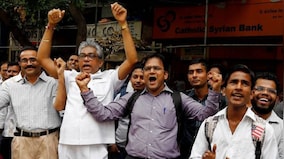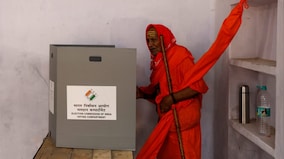2024 is the Election Year. More than 80 countries are scheduled to hold elections this year, some of them have already concluded. These include some of the wealthiest and most powerful, the most populous, the most authoritarian, and the most fragile nations. Many of these elections would test the limits of democracy, while others would be mere exercises in rubber-stamping. But why does the Indian General Election, also known as the Indian Lok Sabha 2024 election stand out?
India, the world’s largest democracy, has concluded its seven-phase parliamentary election, and the results are now eagerly awaited. This colossal democratic exercise, which spanned over two and a half months, stands out as the world’s largest and most complex election.
Chief Election Commissioner Rajiv Kumar announced that India set a world record in the recent elections, with 642 million voters, including 312 million women, casting their ballots.
Addressing a press conference in New Delhi on the eve of counting day, he noted that over 68,000 monitoring teams and 1.5 million polling and security personnel were involved. “India created a world record with 64.2 crore voters, including 31.2 crore women, participating in the Lok Sabha elections this year,” he said.
Highlighting the scale of this year’s polling exercise, Kumar mentioned that nearly 400,000 vehicles, 135 special trains, and 1,692 air sorties were used. “Only 39 repolls took place in the 2024 general elections as against 540 repolls in 2019,” he added.
He also pointed out that Jammu and Kashmir recorded their highest turnout in four decades, with an overall turnout of 58.58 per cent and 51.05 per cent in the Valley.
Discussing the proactive measures taken by the poll body during the election season, Kumar revealed a record seizure of nearly Rs.10,000 crore. “This is nearly three times the value seized in 2019… Local teams were empowered to do their work,” he said.
Here’s a comprehensive look at what made India’s election so unique and unparalleled:
44 days, seven phases
The election process began on 19 April, culminating on 1 June, with the results scheduled to be announced on 4 June. Kumar had outlined the phases: 19 April, 26 April, 7 May, 13 May, 20 May, 25 May, and 1 June. This extended period was essential to manage the logistics of deploying federal security forces and ensuring free and fair elections across the diverse and vast country, said the ECI.
The primary reason for the multiphased election is for the deployment of huge federal security forces required to check everything from polling-related violence or attempts at rigging. However, experts also argued that staggered polls were no guarantee for free and fair elections as longer campaigning favoured the ruling party of the day.
969 million registered voters
India’s electorate size exceeds the population of Europe, which stands at approximately 745 million, and nearly matches the population of Africa, which is about 1.3 billion.
These voters cast their ballots through 5.5 million electronic voting machines at 1.05 million polling stations.
The Election Commission deployed about 15 million polling staff and security personnel to ensure that every voter, even in the remotest areas, could exercise their franchise.
A $14.4 billion election
The 2024 election is expected to be the world’s most expensive, with political parties and candidates spending over 1.2 trillion rupees ($14.4 billion) to woo voters.
Also Read: How India held its first Lok Sabha election in 68 phases
This figure surpasses the $14.4 billion spent in the US presidential and congressional races in 2020. Much of this spending is unaccounted for, with candidates using unregulated funds to bribe voters with money, alcohol, or other enticements. Most of India’s election spending is not publicly disclosed which challenges in monitoring and controlling election finances.
Polling booth at 15,256 feet
Conducting elections in India, the world’s seventh-largest nation by area involves overcoming significant logistical challenges. In the northeastern state of Arunachal Pradesh, election workers travelled 300 miles over four days to set up a polling booth for a single voter.
In Himachal Pradesh, a polling station was established at an altitude of 15,256 feet, making it the highest in the world. In Odisha’s Malkangiri district, polling staff walked 15 kilometers through forests to protect electronic voting machines from Maoist rebels.
2,660 parties
India’s multiparty democracy includes 2,660 registered political parties, each with unique symbols to aid voter identification in a country where a significant portion of the population is illiterate.
In the 2019 elections, 36 parties won seats in the Lok Sabha, with 8,054 candidates contesting, including 3,461 independents. The 2019 election saw a record 67.4 per cent voter turnout, with 612 million people casting their votes. Women’s participation also reached a historic high of 67.18 per cent.
303 against 52
The 2024 election’s principal contenders are Prime Minister Narendra Modi’s Bharatiya Janata Party (BJP) and the main opposition, the Congress party. In 2019, the BJP secured 303 seats, with its coalition holding a total of 353 seats. The Congress party won 52 seats, with 91 seats held by its partners. Opinion polls suggest the BJP is in a strong position following recent state victories.
Modi has set an ambitious target of 370 seats for the BJP, aiming for the party to cross 400 seats with its allies. “The last time any party crossed 370 seats was in 1984,” Modi had stated, referring to the Congress party’s 414-seat victory following Indira Gandhi’s assassination.
If Modi secures a third term, he will become one of India’s longest-serving prime ministers, following Jawaharlal Nehru and Indira Gandhi.
Why does it take so long?
The duration of India’s elections boils down to its sheer size and the logistics involved. With 969 million registered voters, including 18 million first-time voters and 197 million in their 20s, the scale is unparalleled.
Voting took nearly four months in India’s first election in 1951-1952, just four days in 1980, and 39 days in 2019. This year’s election, spanning 44 days, is the second-longest in history.
India’s 28 states and eight federal territories voted at different times, with each phase designed to manage the extensive logistical and security challenges. Uttar Pradesh, the largest state, voted on all seven days due to its massive population of 200 million people which rivals that of Brazil.
A global perspective
The scale of India’s election is often compared to those in other countries to underscore its magnitude. For instance, the 2020 US presidential election saw 158 million voters, a fraction of India’s 969 million.
The European Union, with its 27 member countries, has a population of 447 million, still less than half of India’s electorate. Even the African continent, with 1.3 billion people, hosts a voter base comparable to India’s, but spread across 54 countries.
Also Read: What is India’s first-past-the-post (FPTP) electoral system?
As India awaits the election results, the world watches in awe at the scale, complexity, and determination of the Indian electorate. This election, like no other, has showcased the vibrancy and resilience of the world’s largest democracy.
With inputs from agencies








)
)
)
)